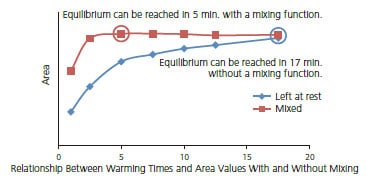HS-10 - Features
Headspace Sampler
Outstanding Reproducibility
Favorable area reproducibility can be obtained, thanks to high-accuracy flow rate control by electronic flow controllers (AFC and APC), and a thermostatic vial chamber with a uniform temperature distribution.
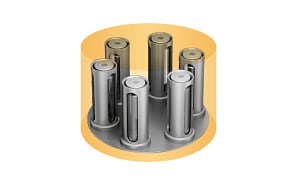
The temperature in the thermostatic vial chamber is uniform; as a result, there is no variance in gas-liquid equilibrium depending on intake position.

Reproducibility for 0.4 % Ethanol 2.0 % (n = 10)
Applications
USP<467>Analysis of Residual Pharmaceutical Solvent
Residual solvents in pharmaceuticals are strictly controlled, and are categorized as Class 1 to Class 3 depending on the risk they pose to human health. The headspace GC method prescribed in USP<467>is utilized for the analysis of residual solvents. Class 1 Procedure A requires a S/N ratio ≥5 for 1,1,1-trichloroethane and a S/N ratio ≥3 for all peaks, while Class 2A requires a resolution ≥1.0 for acetonitrile and methylene chloride. The HS-10 satisfies all of these requirements.
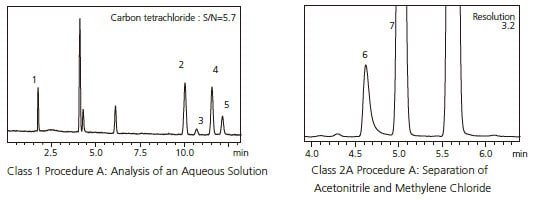
1: 1,1-Dichloroethene
2: 1,1,1-Trichloroethane
3: Carbon tetrachloride
4: Benzene
5: 1,2-Dichloroethane
6: Acetonitrile
7: Methylene chloride
GL Sciences Inc. InertCap 467
0.32mmI.D.×30m df=1.80um
Analysis of VOCs in Water
This is an example of the analysis of 10 μg/L (10 ppb) VOCs in water using the HS-10 and an ECD. The VOCs in water can be measured with excellent reproducibility due to the high thermal stability of the HS-10.
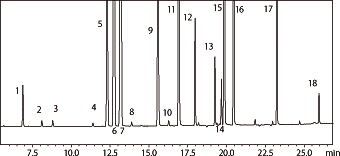
Reproducibility of 10 ppb VOCs RSD % (n = 5)
| 1: 1,1-Dichloroethene 2.1 2: Dichloromethane 2.0 3: trans-1,2-Dichloroethene 2.6 4: cis-1,2-Dichloroethene 2.3 5: Chloroform 2.1 6: 1,1,1-Trichloroethane 2.6 7: Carbon tetrachloride 3.3 8: 1,2-Dichloroethane 1.9 9: Trichloroethene 2.7 |
10: 1,2-Dichloropropane 1.9 11: Bromodichloromethane 2.4 12: cis-1,3-Dichloropropane 1.6 13: trans-1,3-Dichloropropane 1.7 14: 1,1,2-Trichloroethane 2.2 15: Tetrachloroethene 3.4 16: Dibromochloromethane 2.1 17: Bromoform 1.6 18: 1,4-Dichlorobenzene 2.8 |
Blood Alcohol Concentration (BAC)
The analysis of alcohols in blood is frequently performed in the fields of forensic medicine and emergency medicine. It is utilized to determine the level of drunkenness from alcohol ingestion, to evaluate criminality, and to distinguish alcohol ingestion from other medical cases. These measurements must be performed quickly and with high accuracy, demands that can be met by headspace GC.

Overlap Analysis
During a GC analysis, the HS-10 will take the next vial and move it to the vial heater. There, it can incubate for a specified time and be ready for injection when the previous analysis cycle has ended.

Mixing Function
The HS-10 is equipped with the ability to mix each vial by shaking. This allows the headspace concentration within each sample to come to equilibrium sooner, ultimately saving time and increasing throughput.
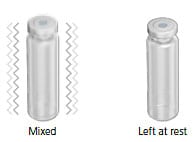
Vials are mixed by moving them up and down.
